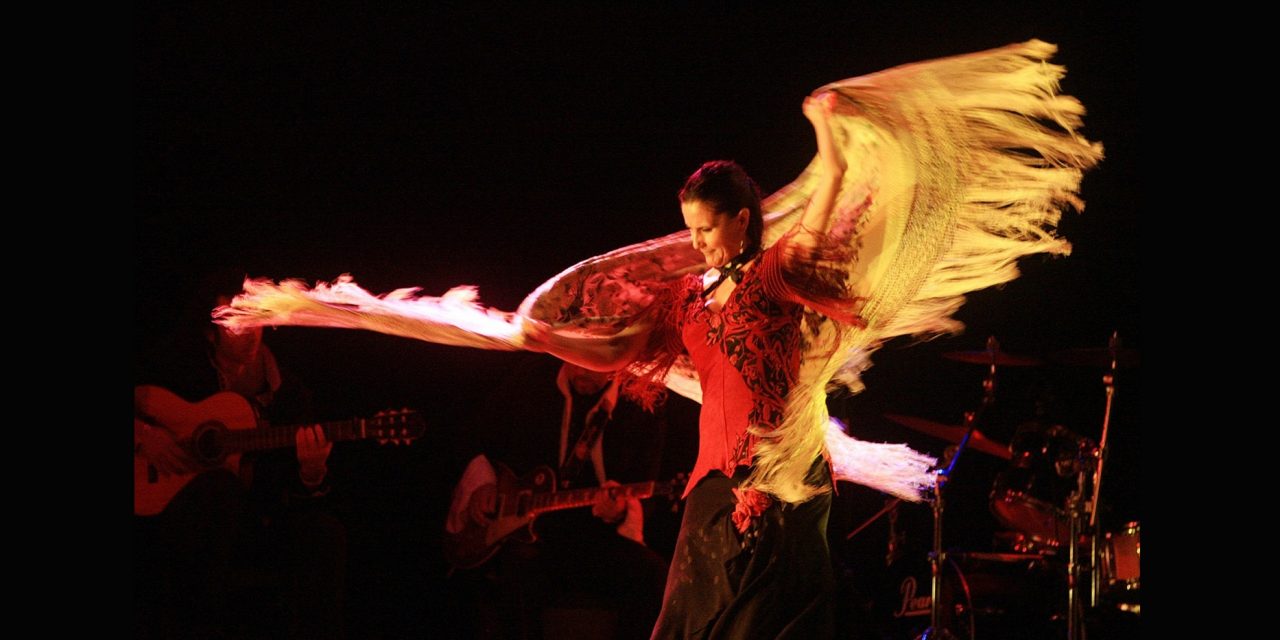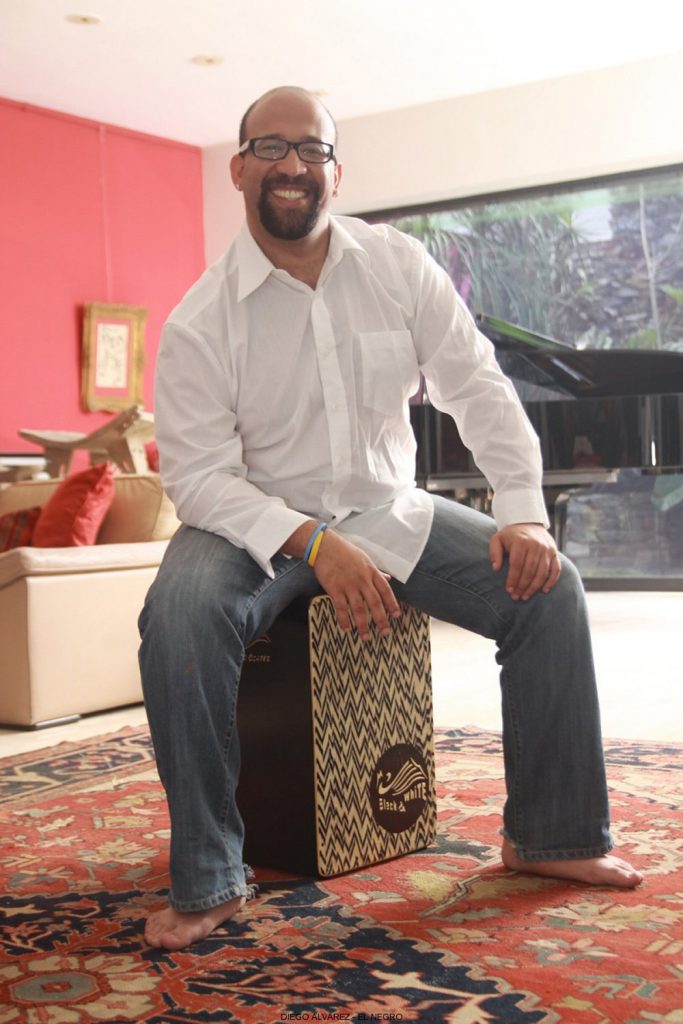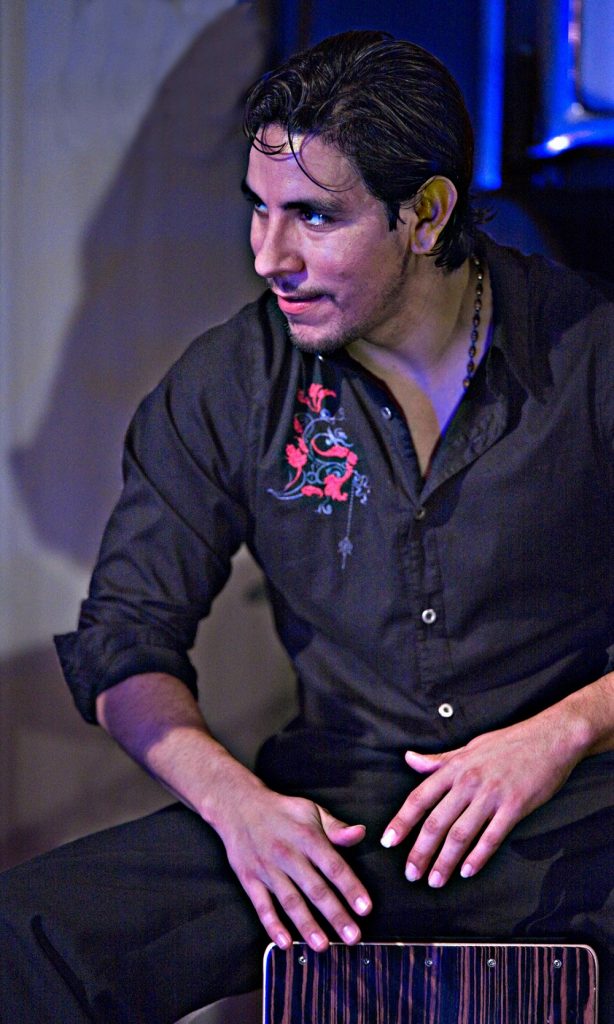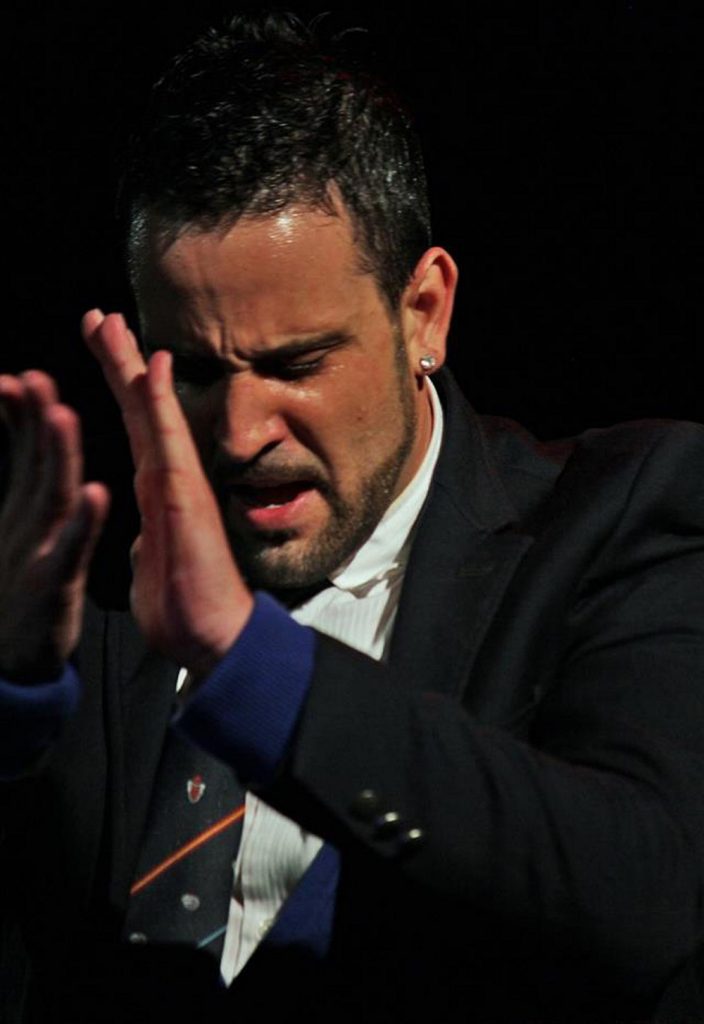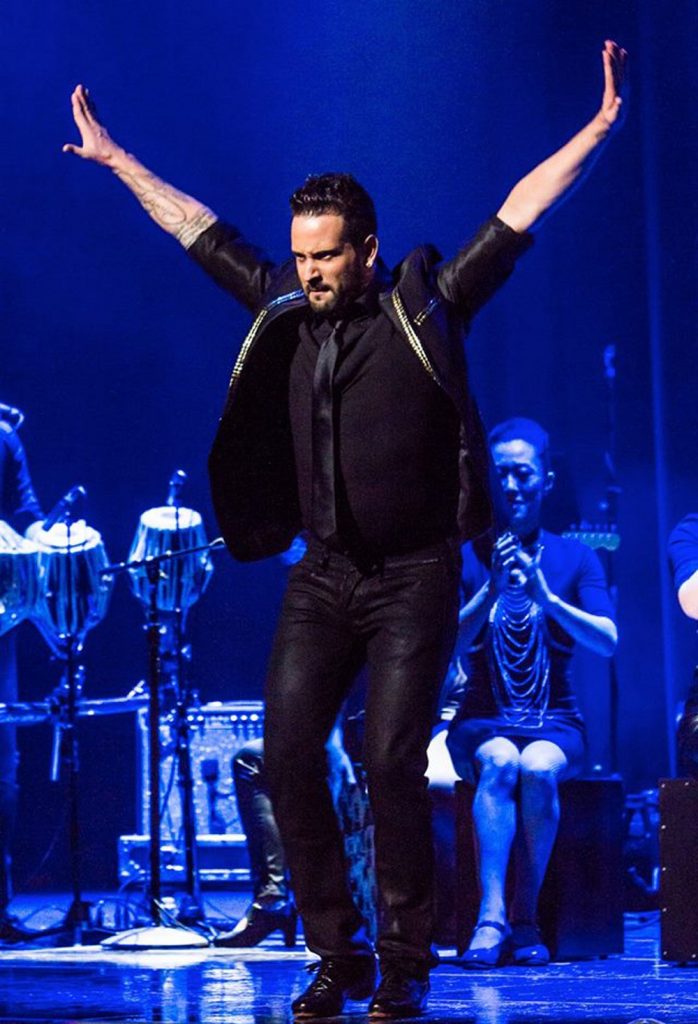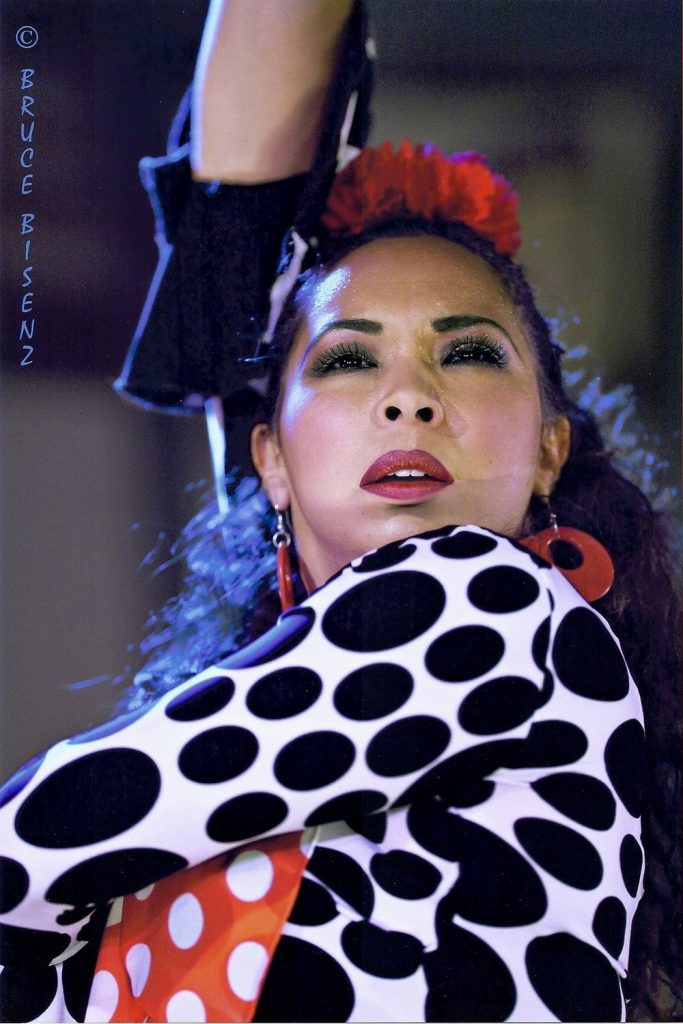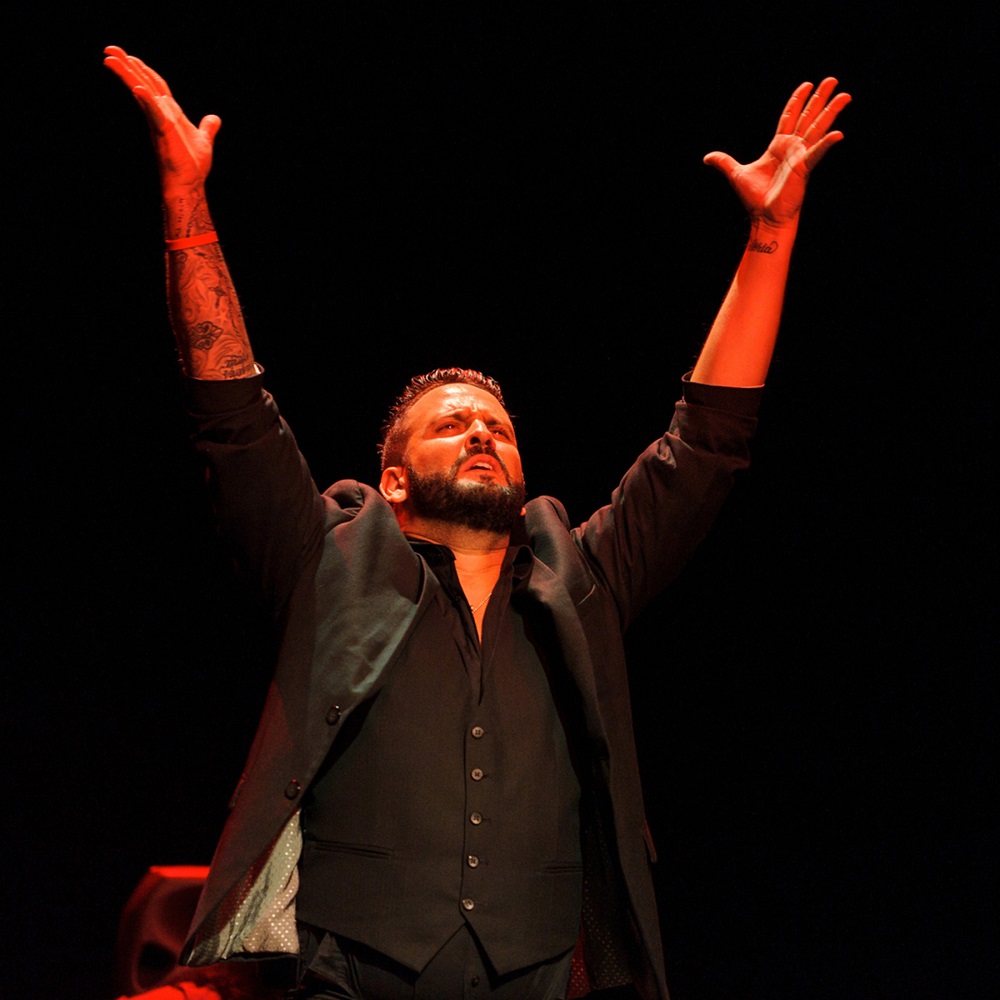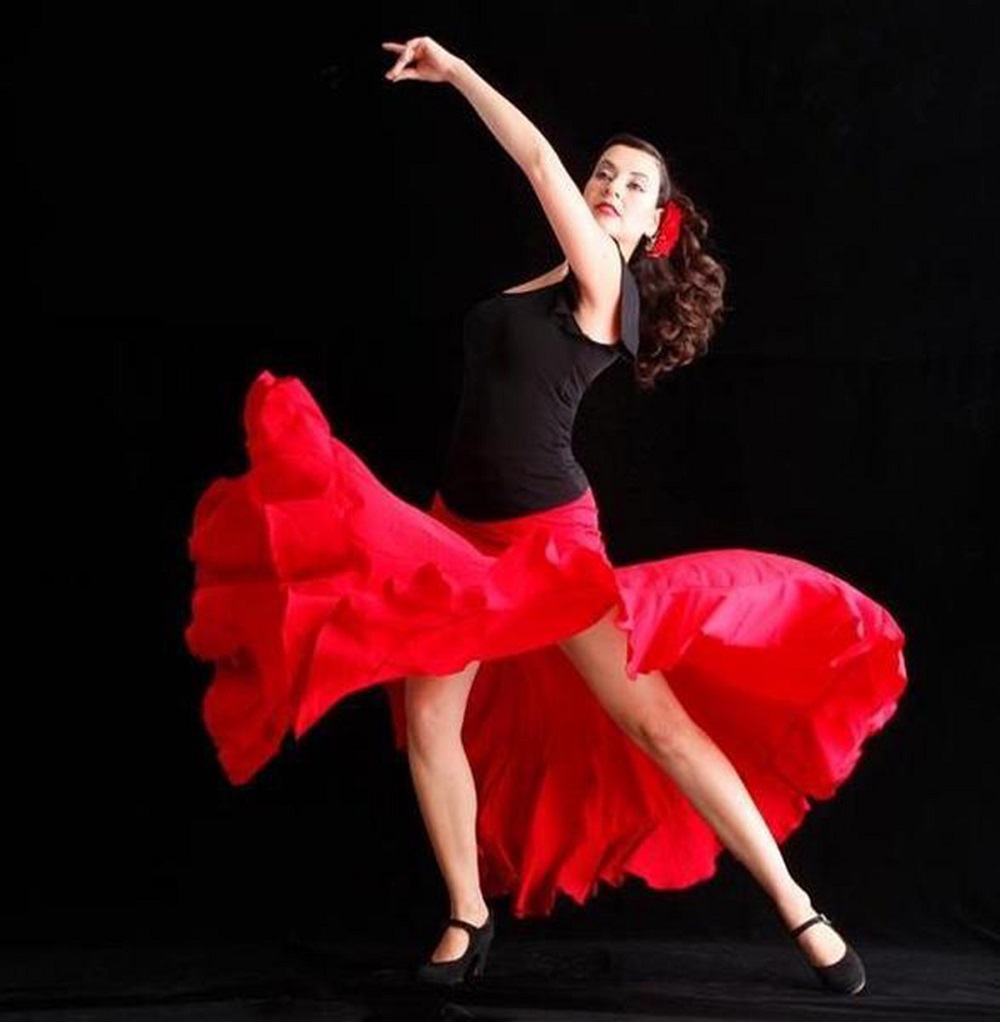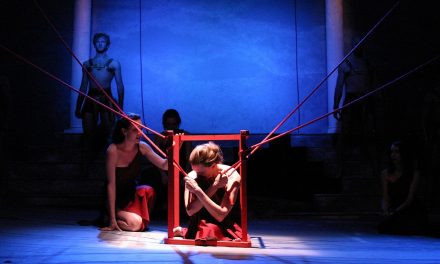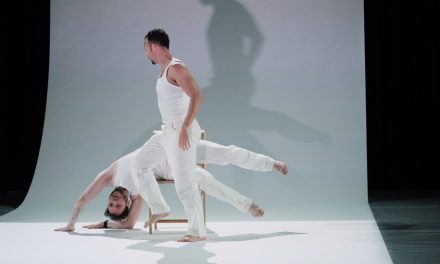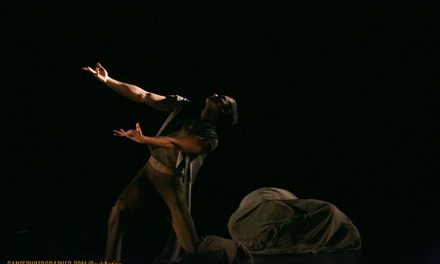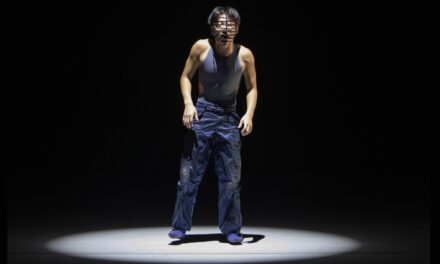Forever Flamenco’s latest Gala Flamenco was a welcome break from the many holiday-themed productions featured every December. Closing out the year in style, the group performed a fiery show at the intimately-sized Fountain Theatre on the 16th, which left audiences burning for more.
With a cast consisting of three regular ensemble dancers, one guest performer, a singer and three musicians, the group almost seemed to outnumber the audience, which had filled the small venue to the brim. The atmosphere they created was pleasant and casual as they sat chatting and laughing with each other on stage before the performance began. The program (conceived by Antonio Triana) included eight pieces that intermittently showed off the dancers’ styles individually and together.
Singer José Cortés Fernández began by vocalizing the first song, “Duende” which in the world of Flamenco means “passion”, “feeling” or “soul”. This was a piece the entire company participated in: Wendy Castellanos, Vanessa Albalos, Manuel Gutierrez and guest star, Maria Bermudez. The group moved altogether, synchronizing some of their hip sways and side-to-side rocking, without fully taking on one another’s style. The main difference lay in the way they used their hands. The song, a rich piece, which set the tone for the night, was punctuated by Gerardo Morales playing the cajón box drum, an Afro-Peruvian instrument introduced to Flamenco by Spanish virtuoso legend, Paco de Lucía, in the ’70s. The more Morales beat his instrument, the louder the guitars (played by Triana and Kai Narezo) became. As the music grew more seductive, the dancers began twirling their wrists and gesturing at the crowd, revving them up as a way to start off the evening.
There was a slight lull in the melody and Fernándes began vocalizing with a “le le le le le,” which triggered the first dancer Wendy Castellanos, to begin her solo. Castellanos stood out from the rest with her purple Manton, which was draped around her torso like a tunic. Her style was a little slower—a rising temperature of building passion. The song she danced to, “Tientos” or “touches”/ “feelings”, drew out the underlying gypsy-style notes heard across within Flamenco music. Traditionally a “canto” from Andalusia (the birthplace of Flamenco), the rhythm really came to life when Castellanos began pounding her feet onto the wooden stage, adding to the beats. She made her way to center stage before circling over to the musicians, dancing at them as if getting ready to make love to their instruments.
Watching the interactions between the band and the dancers in this, and every number emphasized the fact that the evening’s performance wasn’t just for the viewers, but primarily an experience for the entire company. The mood they created within their symbiotic circle was akin to watching something exciting and private. The dancers’ addition of body pats during key moments throughout the night helped emphasize the sensuality. Castellanos was the first to do them, lightly slapping her chest as the music’s energy peaked.
Next up was Albalos, who wore an elaborate red lace dress and several flowers in her hair, half of which fell out during the company’s intro due to her voluptuous body rolls. As the musicians began playing “Soleá por Bulería”, an intermediate step between the two cantos which combines a basic Flamenco dance from Sevilla or Cadíz in Andalusia (Soleá) with a more complicated counting rhythm (Bulería) that adds more interest to the steps. Albalos started off even slower than Castellanos, taking her time to place her feet and establish her presence on stage as the guitars flared behind her. The expressiveness of her fingers was unmatched by any other dancer. She twirled and overextended them, bringing the tips together as though ready to snap, before flicking them away from her palms, as though massaging the melody between them. As soon as the music picked up, she doubled her speed, moving more quickly than her counterparts had and would, which triggered loud cheers. Her facial expressions shifted between smiles of enjoyment and furrowed brows, which she paired with thundering body pats across her torso and legs.
“Pídelo, pídelo” interjected Gutierrez, instructing that Albalos, who was working hard to create the complicated rhythm with her feet, “ask” God or herself to help make the movement happen. It was an encouraging call that enriched the performance and seemingly gave her more energy to keep going after a brief moment of suspense. She then made her way over to a corner of the stage where a yellow flower had fallen from her hair at the beginning of the night and placed it in her mouth—a nod to the Tango-like direction the music often takes on in certain songs—before ending her piece and taking a seat.
The fourth number was performed by the two women and Gutierrez, who led the piece. “Cuesta de Belen”, which may translate to “the cost of Belen” was a fun segment that featured the dancers doing what they did best—playing off one another flirtatiously. It started off with a duet between Gutierrez and Castellanos, who incorporated a set of castanets. The couple danced around each other as if competing to assert dominance. While they were distracted, Albalos stood up with a mischievous grin and went up behind Gutierrez, semi-surprising him as she enticed him into dancing with her. A friendly competition developed between the two women, neither of which acted aggressively. Both eagerly tried to catch their male counterpart’s attention.
The band was on fire behind them, laughing and egging on the scene. Each dancer performed in their specific circle, creating more distance between them and their partner or coming very closely together, but without touching—at least not until a final duet took place between Castellanos and Gutierrez at the end.
Gutierrez had a unique style that stood out from the women. He often raised his arms above his head as though casting a spell, which he very much did upon the audience. Albalos and Castellanos used their long skirts as props, raising and playing with them as they moved, while Gutierrez compensated by grabbing the edges of his coat as he spun. As the number came to a close, they walked and cheered off stage, leaving the room for a twenty-minute intermission in order to change for the next act and their grand finale.
The second half of the show was an interesting departure from the pattern they had created. Rather than a dance number, Fernández began the first scene by showing off his singing chops with a guitar solo. His piece, simply titled “Cante y Guitarra” or “Song and Guitar”, was a reflection of their group’s dedication to the art of Flamenco. Although the dancers are often the focus in Flamenco shows, the “canto” is traditionally considered to be the “heart or soul” of the performance. Fernández made that clear with a sad song about a man not being able to satisfy his lover. As he strummed the notes, thundering out his feelings of frustrations through his guitar, he stretched his voice, heightening his pitch and thinning it out to a light rasp during some of the more emotional moments. He expressed his deep longing by hugging his instrument, bringing it closer to his chest, as if it were the body of the woman he loved. Despite the sharp skillful “toque” or guitar playing that had created the ambiance of the show, Fernández’s passionate singing was the fuel that fired up the dancers’ feet throughout the show, sounding strong in every genre the musicians had tackled. In this segment, it took on a more wistful quality that helped separate it from the rest and demonstrate more diversity.
Gutierrez finally performed his semi-solo piece with “Soleáres”, named after the Soleá dance. It began with him taking the floor on his own, lifting his arms up high in two closed fists as the music took hold of him. Fernández suddenly surprised everyone by crossing into center stage from his seated position next to the musicians behind the dancing area and challenging Gutierrez throughout his entire performance. Spouting dual words of encouragement and sad lyrics of disillusioned love, his tone built up an anxious energy that pushed Gutierrez to the edge—his stomps became more prominent, his clapping louder, and the company’s encouragement louder: “Aah! Aah! Aaaah!”
During much of the dance, Gutierrez did not make eye contact with Fernández, looking down or away while concentrating on his craft until certain words or expressions garnered is focus upward. He developed a confrontational approach that showed he could hold his own against the singer and handle the emotions evoked by the song. His piece was the longest and his applause, accordingly, amongst the loudest of the evening.
Last, but not least was guest performer Maria Bermudez—a veteran of the Flamenco world—in “Cantiñas”. Similar to a Soleá but sung in a much more upbeat and lively rhythm, the music matched the smile she flashed continuously during the show’s introduction and throughout her piece as well. Establishing a beat that had the entire audience jumping with joy, the band was most vibrant as they played this song, alternatively spotlighting Triana and Narezo’s guitar playing and Morales’ attacking of his world percussion drum.
Bermudez’s delivery was very dramatic. She was both graceful and aggressive, vocalizing alongside Fernández during the height of her movements and shimmying her shoulders while strongly patting her body. She received the largest response from the crowd, with many yelling “elegancia!” at her, remarking upon her elegant movements. Bermudez was smooth in the way she took over the stage, gliding near the musicians, then bouncing back out to face the audience. She often raised her skirt to show off her legs, then twirled and spun swiftly.
Ending the night on that uplifting note was the “Fin de Fiesta”, and it was a vivid “ending to a dance”, which involved the whole company in one final celebration. Similarly, to “Duende”, each dancer showed off their individual styles and coordinated on turns. Audience members were allowed to take pictures and film during this very short finale. Before exiting the stage, Fernández’s enthusiasm took over his body and he performed a very quick two-step Flamenco as the seven other performers engulfed him in a tight semi-circle.
One thing that went wrong during the show was a brief technical problem, which caused a loud buzzing and static noise sometime during the middle portion of the production. However, the issue was quickly fixed, the show went on and all the performers were able to deliver an entertaining program with a wide variety of emotions and themes that fans of the art form and newcomers alike were able to enjoy.
For more information about Forever Flamenco, Click here.
Featured image: Forever Flamenco – Maria Bermudez – Photo: Miguel Angel Gonzalez

